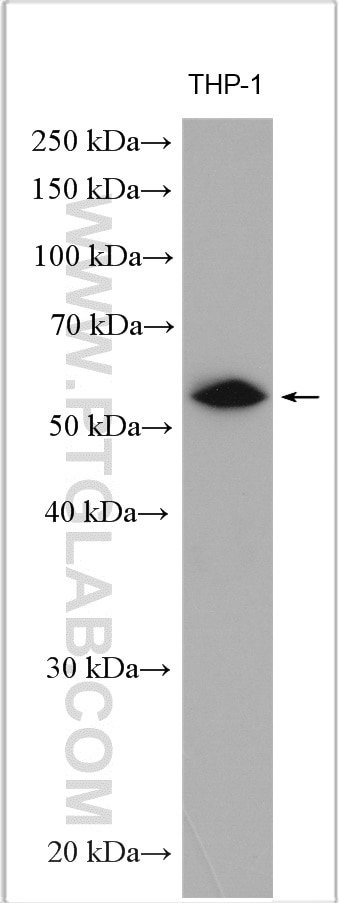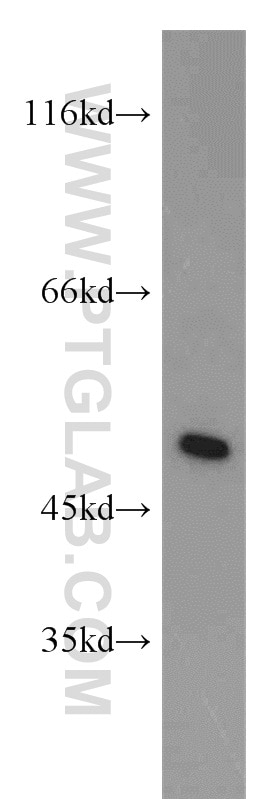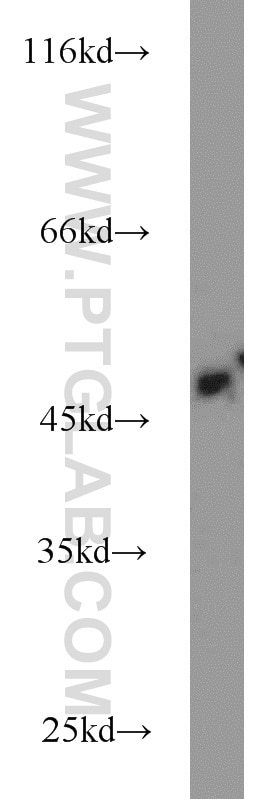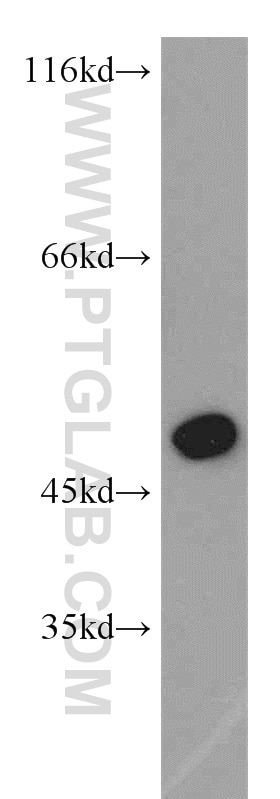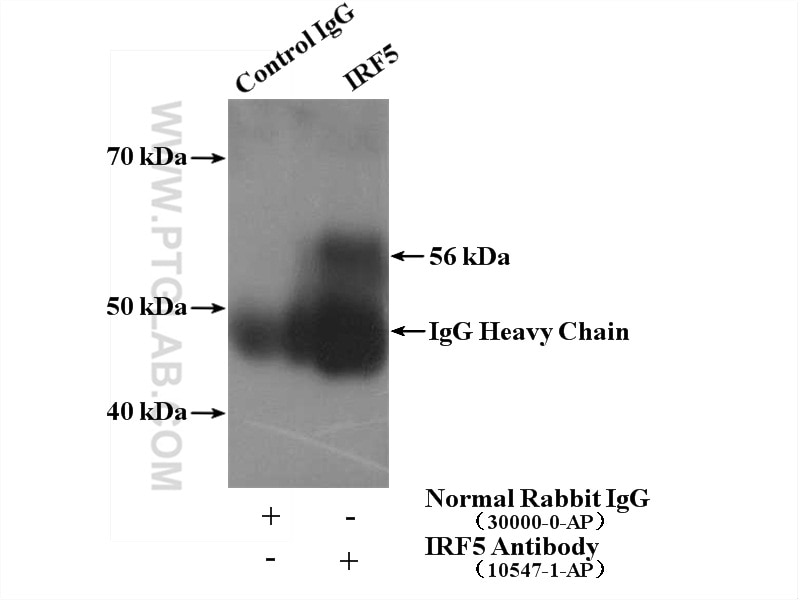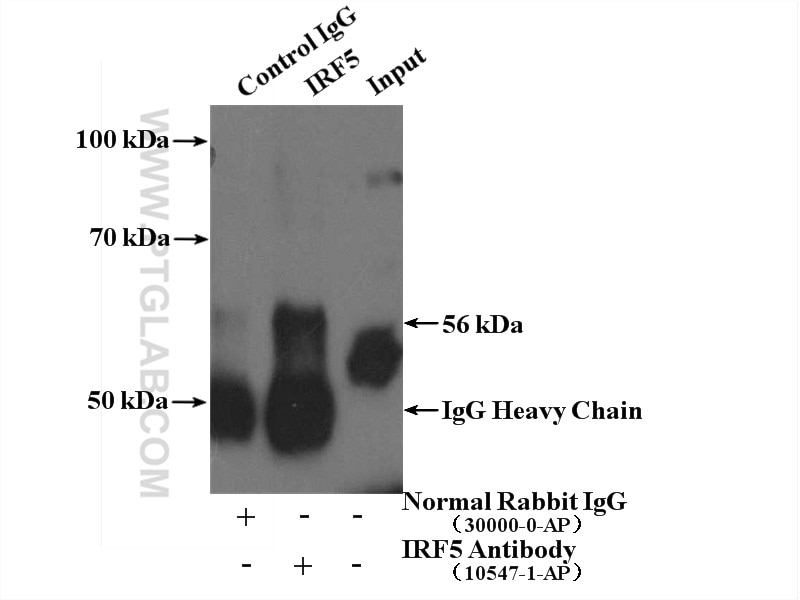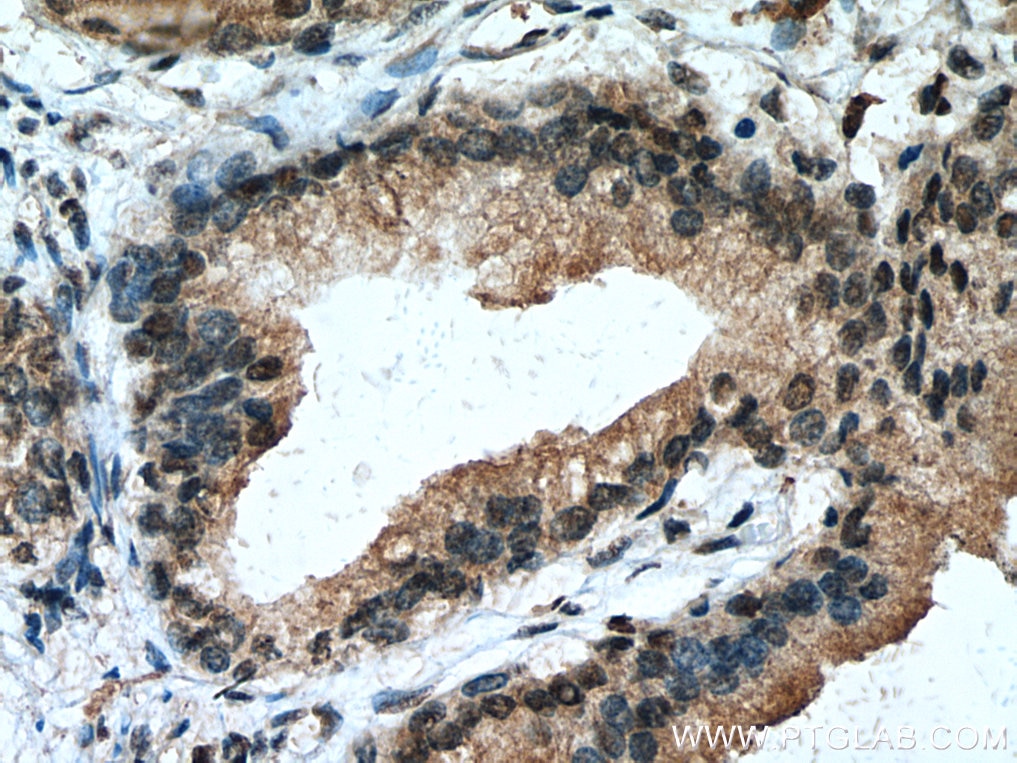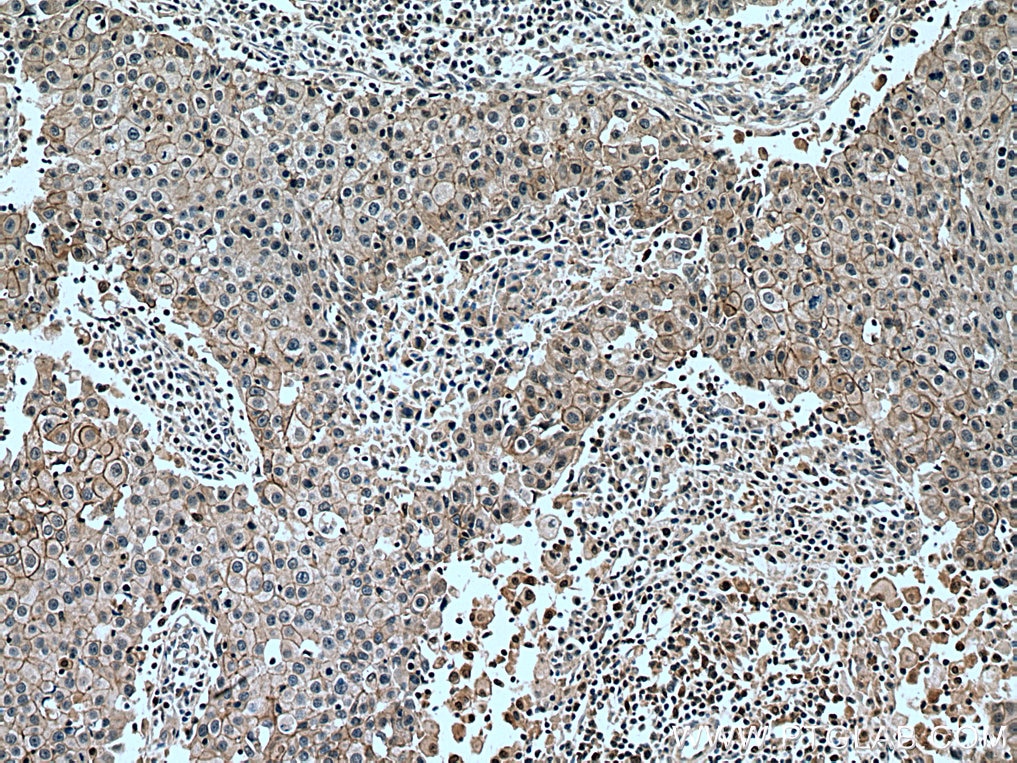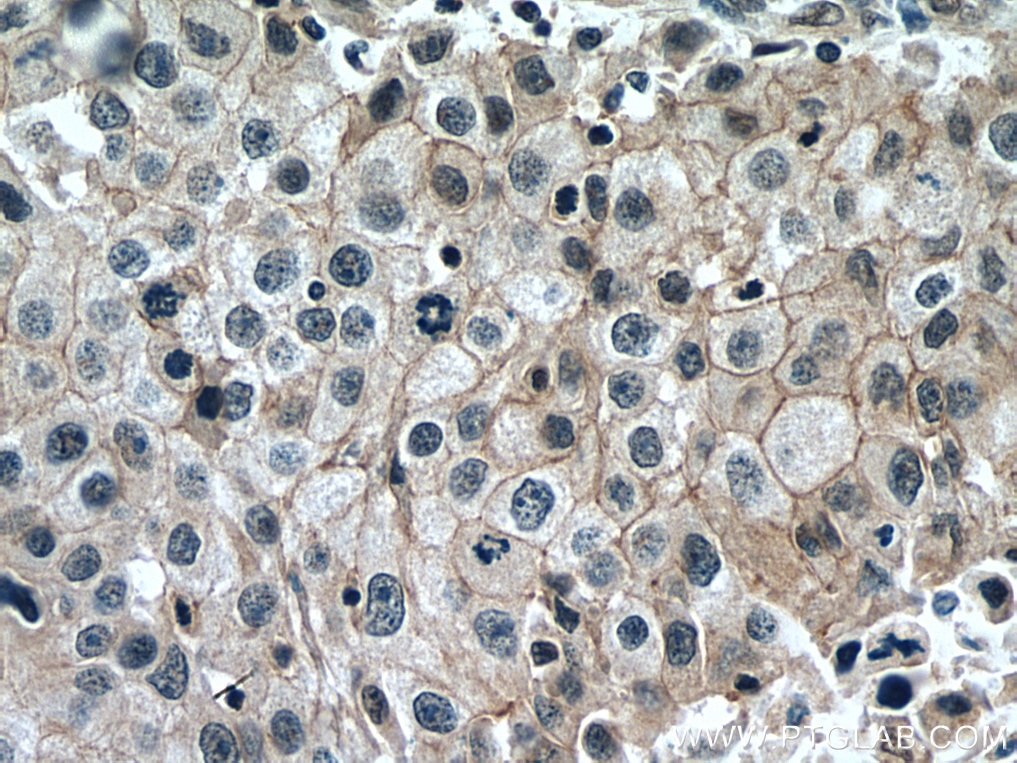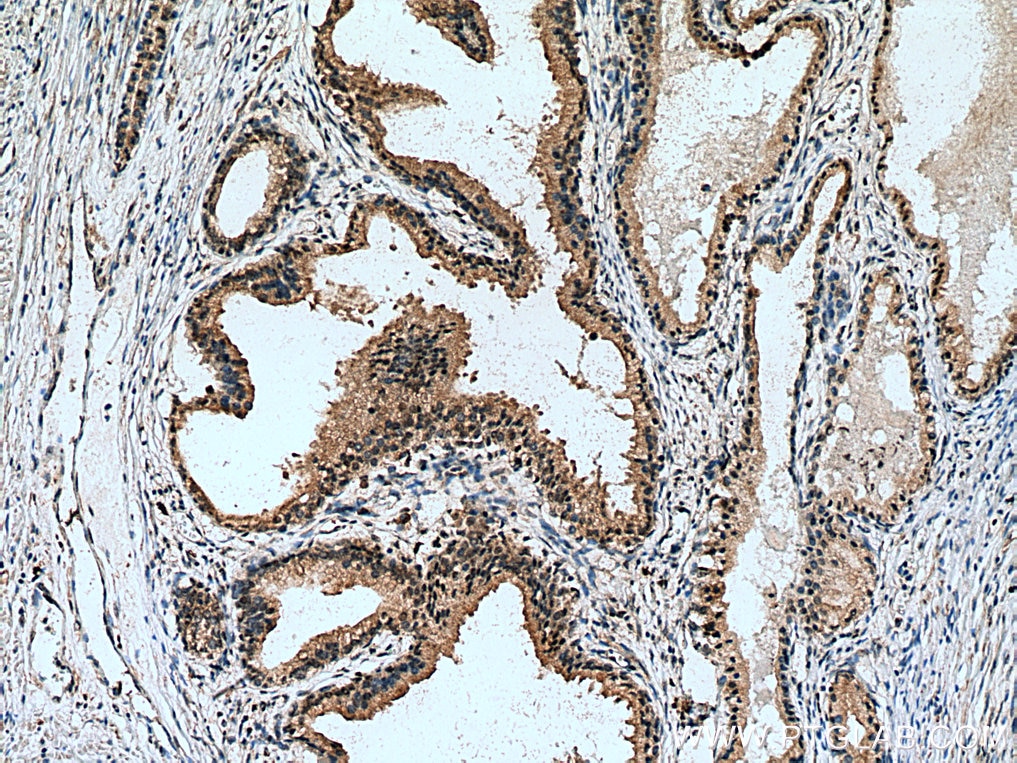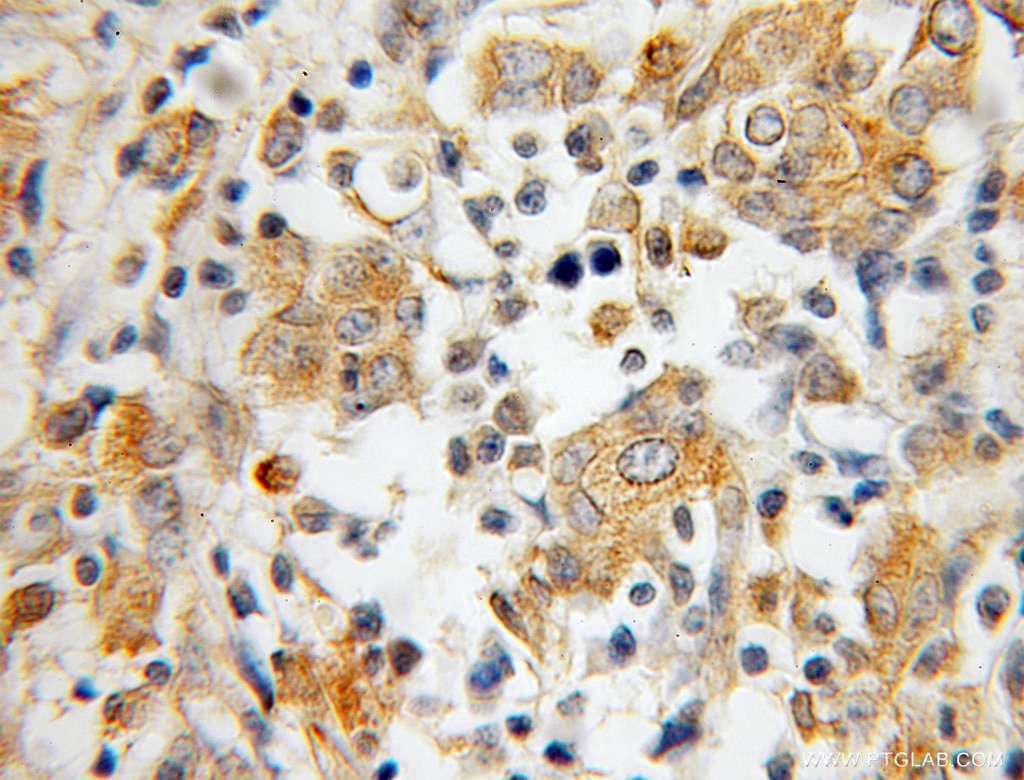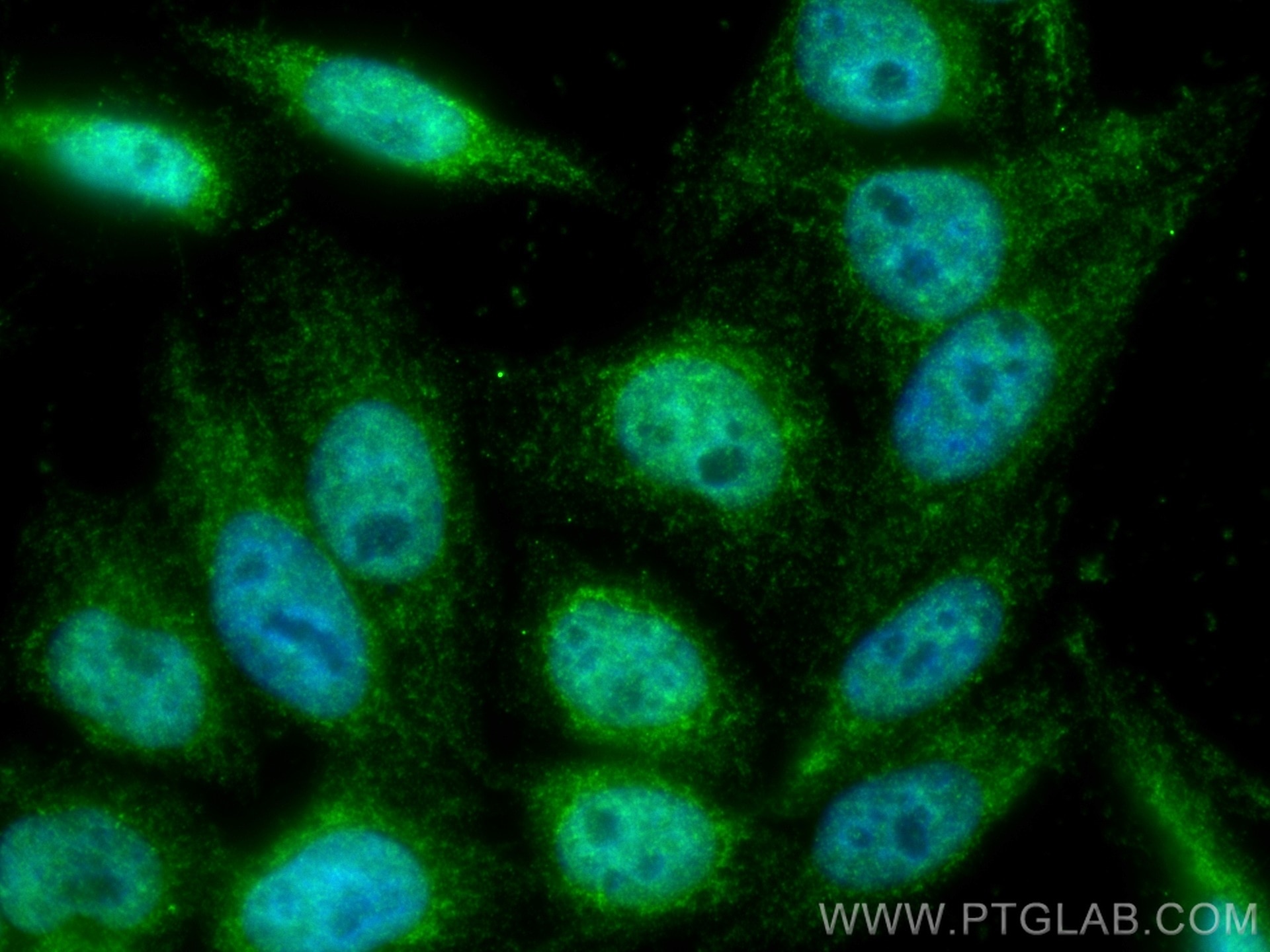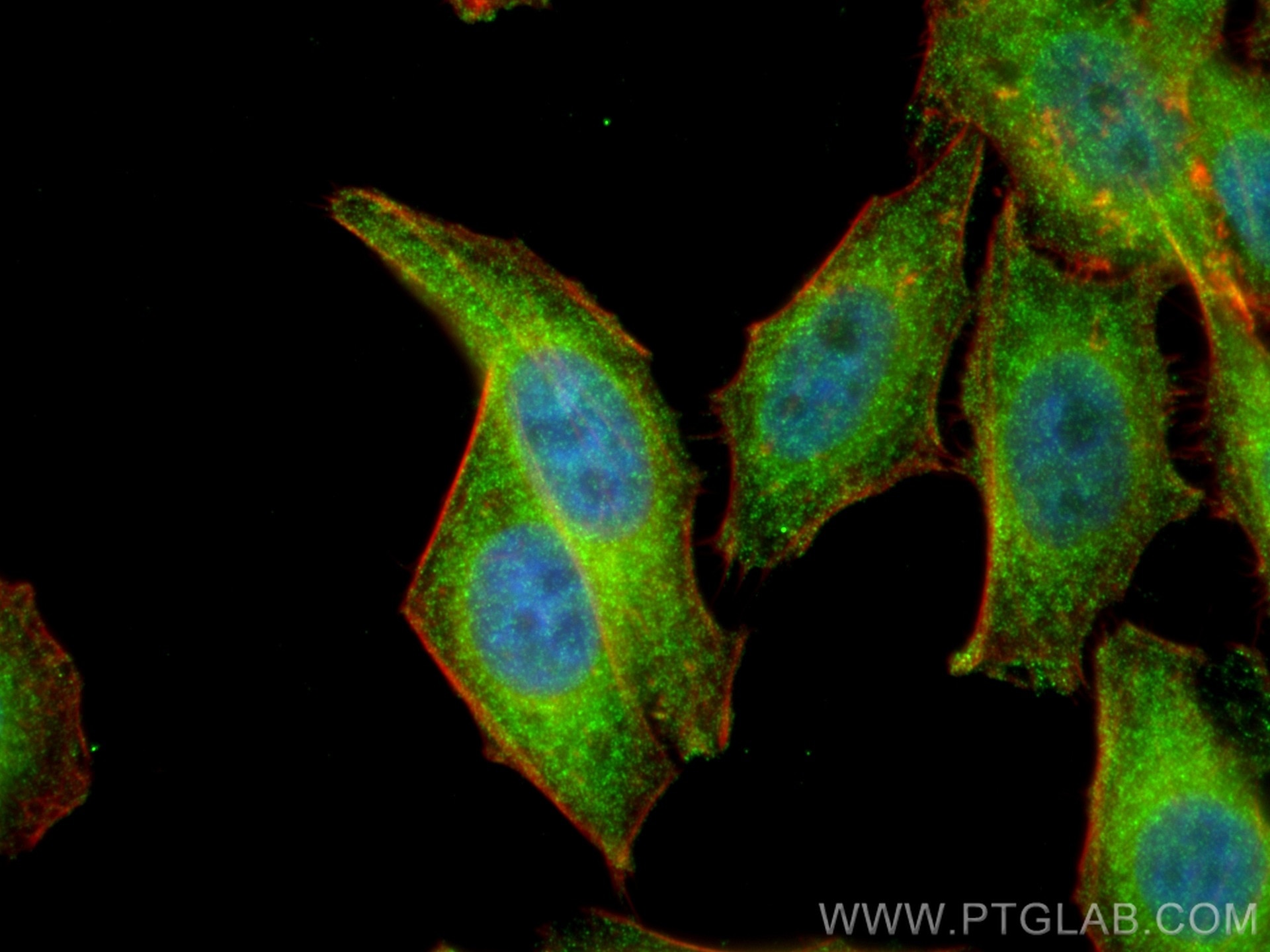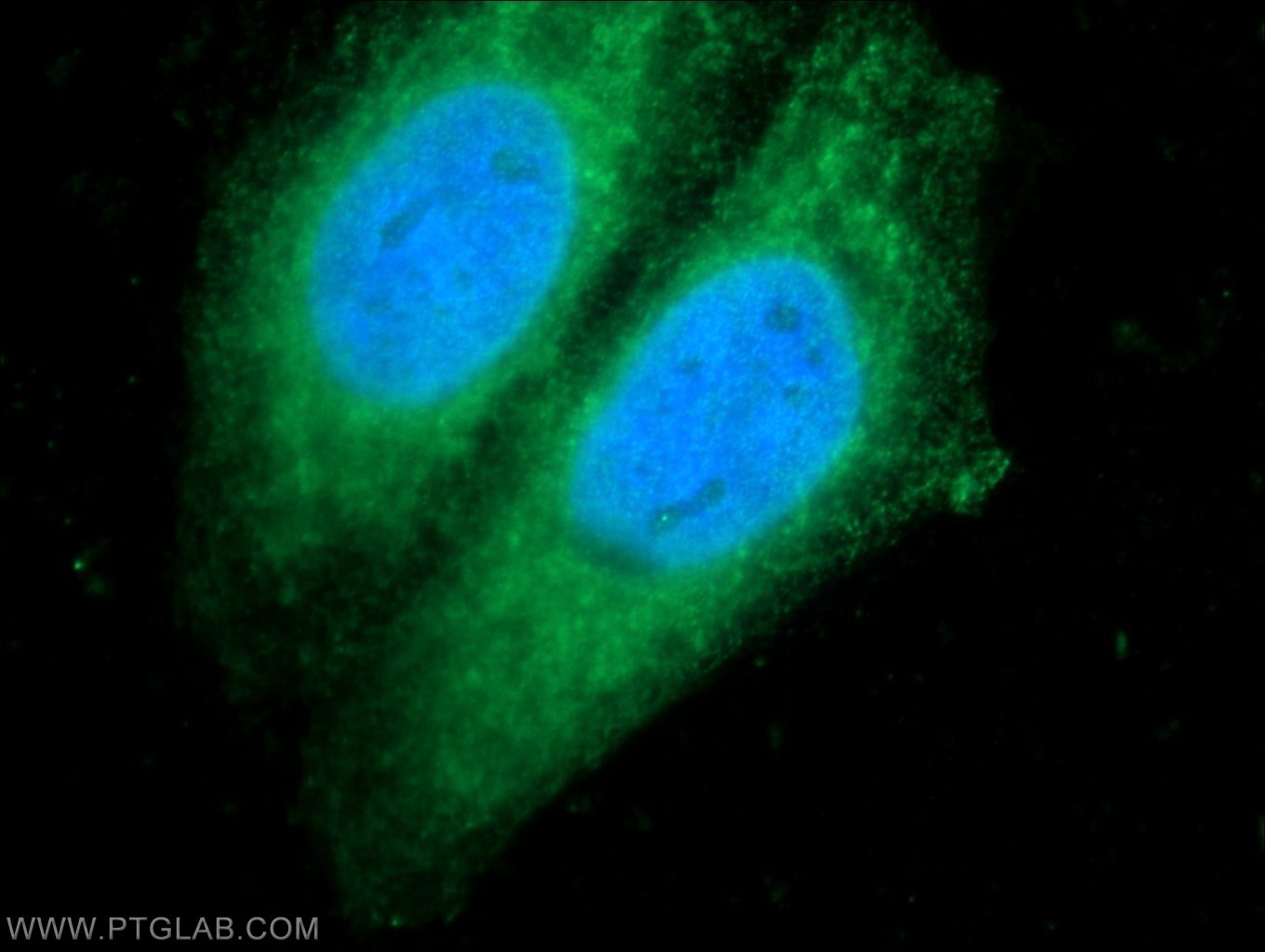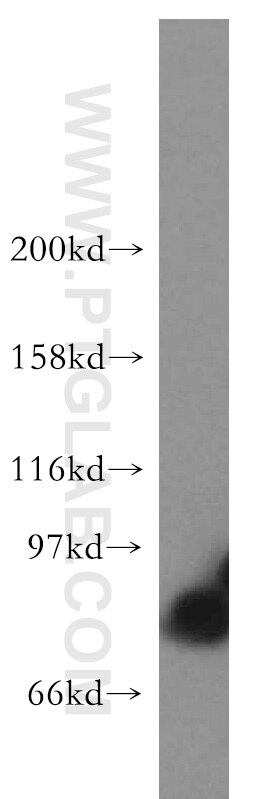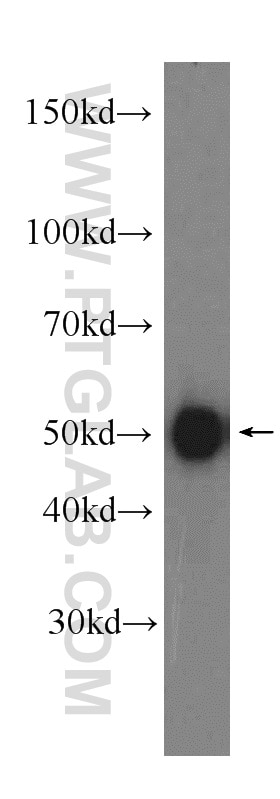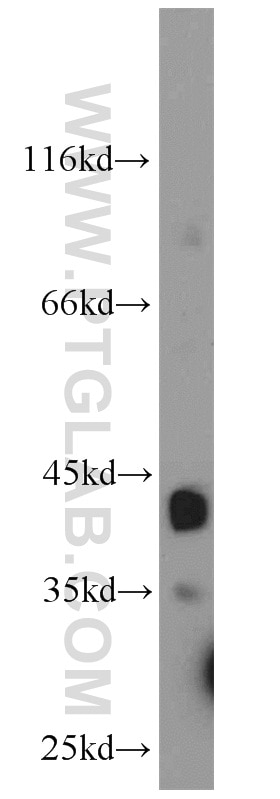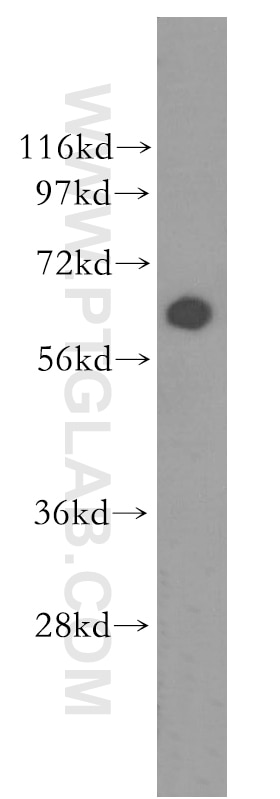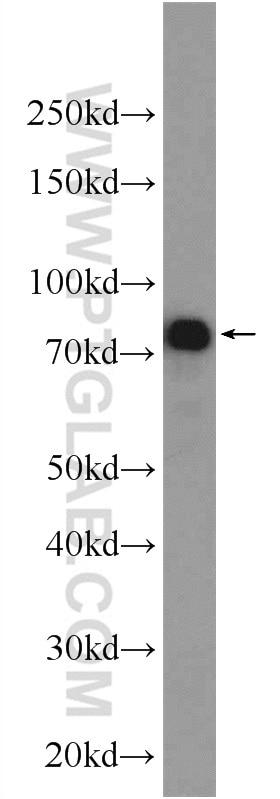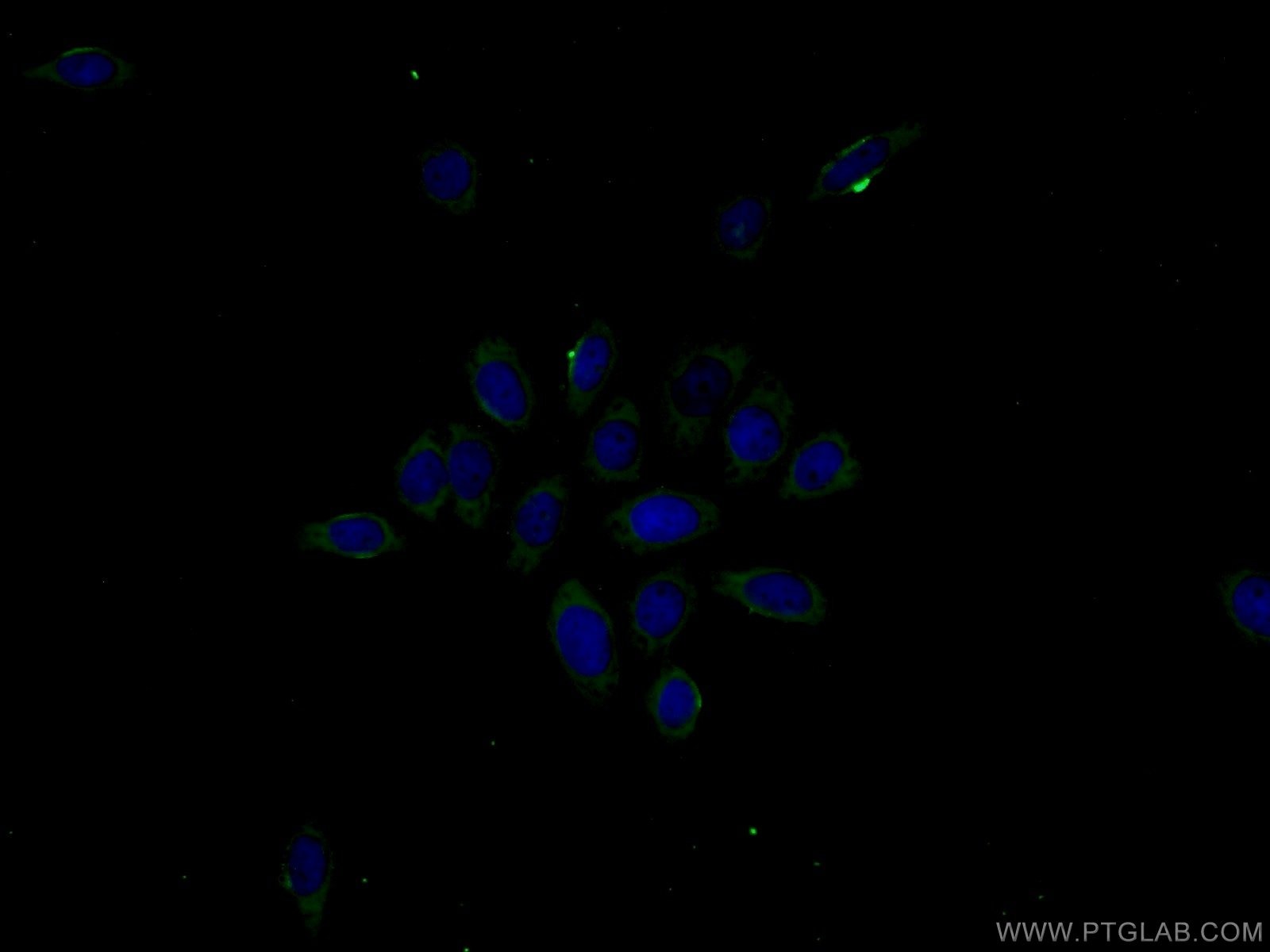Anticorps Polyclonal de lapin anti-IRF5
IRF5 Polyclonal Antibody for WB, IP, IF, IHC, ELISA
Hôte / Isotype
Lapin / IgG
Réactivité testée
Humain, rat, souris
Applications
WB, IHC, IF/ICC, IP, ELISA
Conjugaison
Non conjugué
N° de cat : 10547-1-AP
Synonymes
Galerie de données de validation
Applications testées
| Résultats positifs en WB | cellules THP-1, cellules Jurkat, cellules SH-SY5Y |
| Résultats positifs en IP | cellules HeLa |
| Résultats positifs en IHC | tissu de cancer de la prostate humain, tissu de cancer du sein humain il est suggéré de démasquer l'antigène avec un tampon de TE buffer pH 9.0; (*) À défaut, 'le démasquage de l'antigène peut être 'effectué avec un tampon citrate pH 6,0. |
| Résultats positifs en IF/ICC | cellules HepG2, |
Dilution recommandée
| Application | Dilution |
|---|---|
| Western Blot (WB) | WB : 1:2000-1:10000 |
| Immunoprécipitation (IP) | IP : 0.5-4.0 ug for 1.0-3.0 mg of total protein lysate |
| Immunohistochimie (IHC) | IHC : 1:50-1:500 |
| Immunofluorescence (IF)/ICC | IF/ICC : 1:50-1:500 |
| It is recommended that this reagent should be titrated in each testing system to obtain optimal results. | |
| Sample-dependent, check data in validation data gallery | |
Applications publiées
| WB | See 21 publications below |
| IHC | See 9 publications below |
| IF | See 4 publications below |
| IP | See 1 publications below |
| FC | See 1 publications below |
Informations sur le produit
10547-1-AP cible IRF5 dans les applications de WB, IHC, IF/ICC, IP, ELISA et montre une réactivité avec des échantillons Humain, rat, souris
| Réactivité | Humain, rat, souris |
| Réactivité citée | rat, Humain, souris |
| Hôte / Isotype | Lapin / IgG |
| Clonalité | Polyclonal |
| Type | Anticorps |
| Immunogène | IRF5 Protéine recombinante Ag0841 |
| Nom complet | interferon regulatory factor 5 |
| Masse moléculaire calculée | 56 kDa |
| Poids moléculaire observé | 56 kDa |
| Numéro d’acquisition GenBank | BC004201 |
| Symbole du gène | IRF5 |
| Identification du gène (NCBI) | 3663 |
| Conjugaison | Non conjugué |
| Forme | Liquide |
| Méthode de purification | Purification par affinité contre l'antigène |
| Tampon de stockage | PBS avec azoture de sodium à 0,02 % et glycérol à 50 % pH 7,3 |
| Conditions de stockage | Stocker à -20°C. Stable pendant un an après l'expédition. L'aliquotage n'est pas nécessaire pour le stockage à -20oC Les 20ul contiennent 0,1% de BSA. |
Informations générales
IRF5, also named as SLEB10, contians one IRF tryptophan pentad repeat DNA-binding domain and belongs to the IRF family. It is a transcription factor involved in the induction of interferons IFNA and INFB and inflammatory cytokines upon virus infection. It is activated by TLR7 or TLR8 signaling. Genetic variations in IRF5 are associated with susceptibility to inflammatory bowel disease type 14 (IBD14) and systemic lupus erythematosus type 10 (SLEB10). Alternative splice variant encoding different isoforms exist. Catalog#10547-1-AP is a rabbit polyclonal antibody raised against the C-terminal of human IRF5.
Protocole
| Product Specific Protocols | |
|---|---|
| WB protocol for IRF5 antibody 10547-1-AP | Download protocol |
| IHC protocol for IRF5 antibody 10547-1-AP | Download protocol |
| IF protocol for IRF5 antibody 10547-1-AP | Download protocol |
| IP protocol for IRF5 antibody 10547-1-AP | Download protocol |
| Standard Protocols | |
|---|---|
| Click here to view our Standard Protocols |
Publications
| Species | Application | Title |
|---|---|---|
Nat Commun Early macrophage response to obesity encompasses Interferon Regulatory Factor 5 regulated mitochondrial architecture remodelling | ||
J Immunother Cancer Ccl3 enhances docetaxel chemosensitivity in breast cancer by triggering proinflammatory macrophage polarization. | ||
Am J Transplant Characterization of Transfusion-Elicited Acute Antibody-Mediated Rejection in a Rat Model of Kidney Transplantation. | ||
J Control Release PEGylation of interleukin-10 improves the pharmacokinetic profile and enhances the antifibrotic effectivity in CCl?-induced fibrogenesis in mice. | ||
Br J Pharmacol Ibuprofen and diclofenac treatments reduce proliferation of pancreatic acinar cells upon inflammatory injury and mitogenic stimulation. |
